<< Previous | Displaying results 6601-6610 of 6768 for "" | Next >>
A Hochheim parade float proceeds down the Kirchstrasse, passing by a display box for Der Stürmer, an antisemitic newspaper. The display box bears the slogan, "Without a solution to the Jewish question, there is no salvation for the German people." Hochheim am Main, Germany, circa 1934–1940.
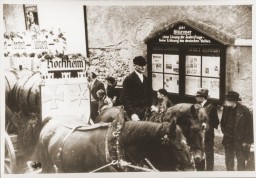
Adolf Hitler (center) walks and converses with other Nazi officials, date unknown.
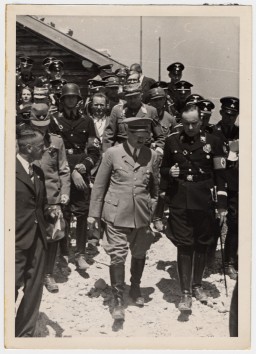
Cheering spectators greet Hitler upon his departure for the Reichstag session at which the Enabling Act was passed. The act allowed the government to issue laws without the consent of Germany’s parliament, laying the foundation for the complete Nazification of German society.
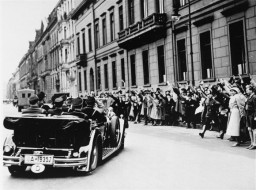
Dorrith was born in Kassel, Germany, in December 1938. Her parents were Hans and Trudi Oppenheim. Following increased anti-Jewish measures, Dorrith was among the children sent on Kindertransports to find refuge in the United Kingdom. She left Germany on July 24, 1939. She never saw her parents again. They were deported to Auschwitz, where they perished in October 1944.
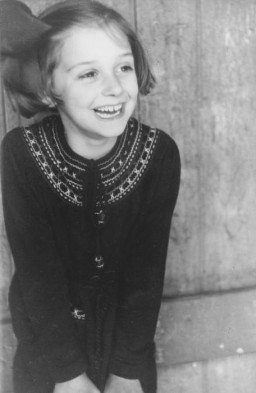
On the day of the vote on the so-called Enabling Act, the Nazi leadership sent SS troops into the makeshift Reichstag building, formerly the Kroll Opera, to intimidate other political parties. Berlin, Germany, March 23, 1933. The Enabling Act allowed the Reich government to issue laws without the consent of Germany’s parliament, laying the foundation for the complete Nazification of German society. The full name of the law was the “Law to Remedy the Distress of the People and the Reich.”
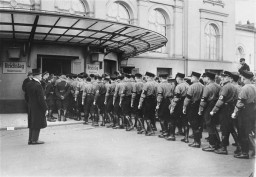
Photograph of Esther Lurie and a friend, Jose, who were both students at the Institute of Art in Brussels. Here they are enjoying refreshments on an outdoor terrace in the early 1930s. Lurie would later flee Europe as war became imminent. Brussels, Belgium, 1931–1933.
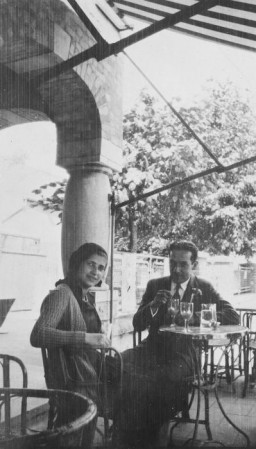
View of the Sobibor camp gate in the spring of 1943. Jews deported to the Sobibor killing center were driven through the gate into the camp on foot, by truck or horse-drawn cart. The train track led through a separate entrance to the right onto the site. Pine branches were braided into the fence to make it difficult to see in from the outside. This image comes from an album and collection kept by Johann Niemann, who became deputy commandant of the Sobibor killing center after holding positions in the…
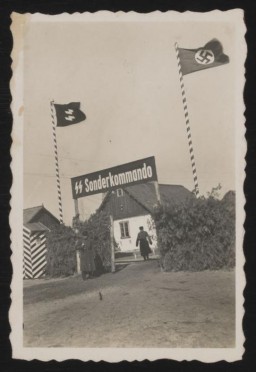
Rare photograph showing Sobibor killing center personnel relaxing and posing, all while implementing the mass murder of at least 167,000 innocent Jews.
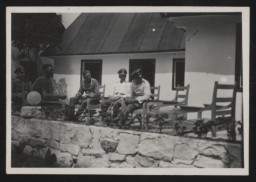
Rare photograph showing a view of the German personnel living quarters at the entrance to the Sobibor killing center in German-occupied Poland.
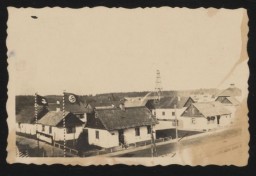
Rare image of the Sobibor killing center, taken from an album of photos belonging to Sobibor deputy camp commandant Johann Niemann.
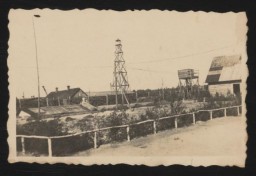
We would like to thank Crown Family Philanthropies, Abe and Ida Cooper Foundation, the Claims Conference, EVZ, and BMF for supporting the ongoing work to create content and resources for the Holocaust Encyclopedia. View the list of donor acknowledgement.